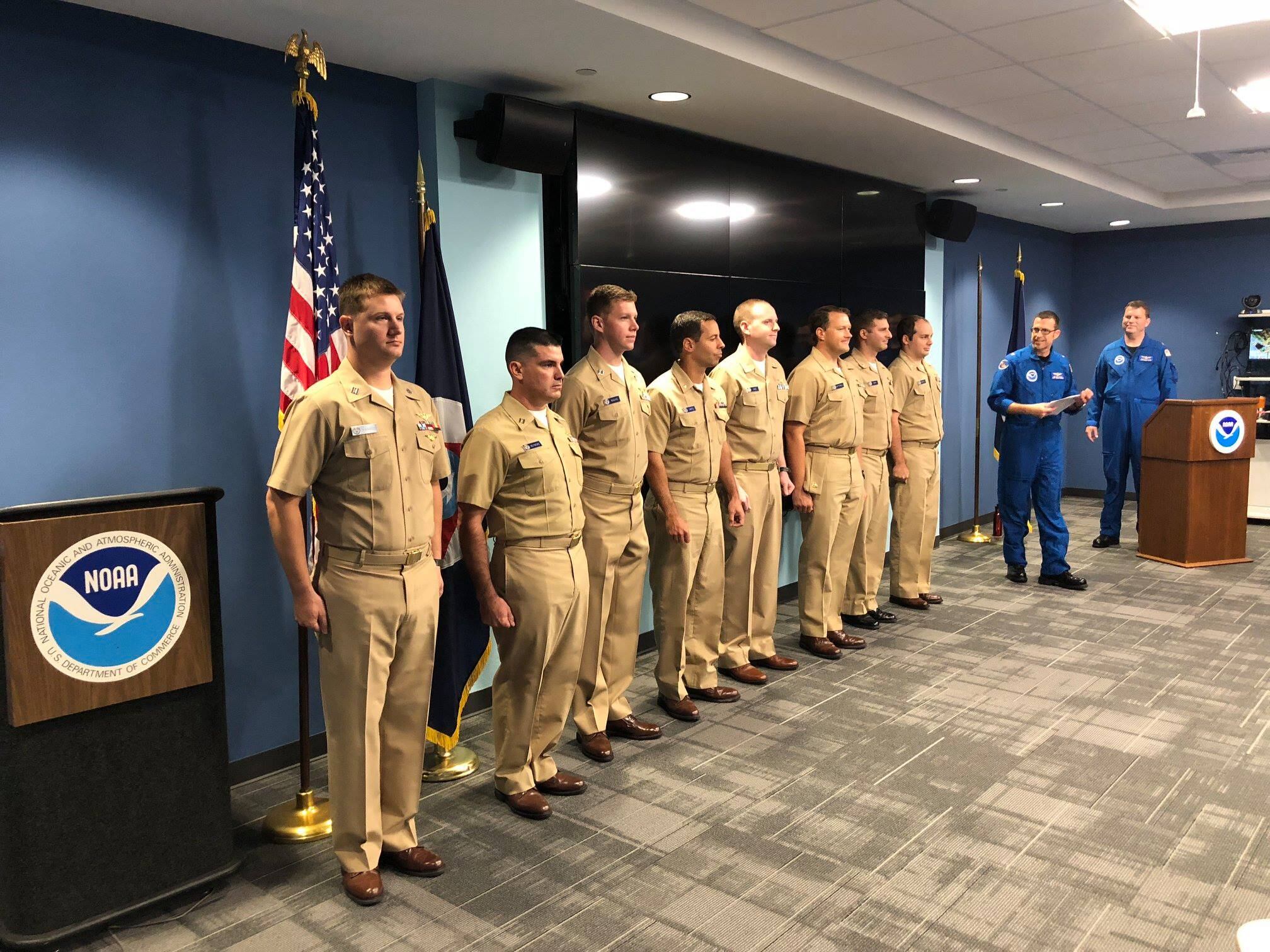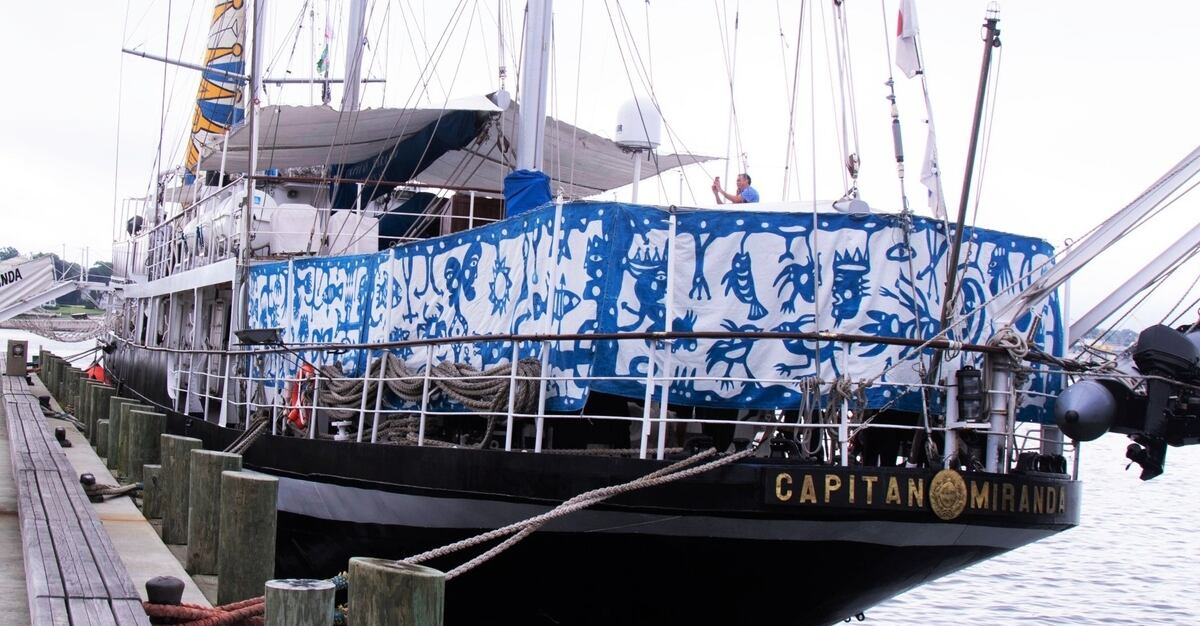HILTON HEAD, S.C. — Sam Urato was 5 years old when his family loaded into a station wagon and fled Hilton Head Island ahead of Hurricane Hugo.
This week, he's headed in the opposite direction. He's flying into the teeth of Hurricane Dorian.
Urato is a hurricane hunter.
He's one of the select few who board NOAA airplanes that chase all the tropical storms and hurricanes that threaten the United States.
Urato is strapped down in the turboprop plane, along with everything from the laptops to the coffee pots, for a bumpy ride that few humans ever experience.
The plane grinds through the eye wall's dangerous 200-mph winds to slice into the center of the hurricane, collecting the tracking data we see on TV as a "spaghetti model" or "cone of uncertainty."
Urato is the navigator on a plane nicknamed "Kermit." It's his job to get it into the eye of the hurricane.
"It's a small target," he said this week between flights over the Atlantic Ocean out of St. Croix.
"Once you punch through the eye wall, it's an intense feeling," he said.
"When you think about how hard it is to get there, and how few people have ever been there, it's unreal. The feeling is unexplainable."
Urato was known on Hilton Head as an outstanding violinist, not a hurricane hunter.
He started taking violin lessons when he was 4, and was the longest-running student of the legendary Dorothy Mauney.
He became concertmaster of the Hilton Head Youth Orchestra. He earned scholarships and played first violin for orchestras at the University of Georgia and the University of South Carolina. Today, he plays for friends at weddings.
He also played football and baseball, and spent 11 years at Hilton Head Preparatory School before his senior year at Hilton Head Island High School.
Urato's parents, Cosimo "Cos" and Debbie Urato, are best known for Fratello's, the popular Italian restaurant the family operated for 28 years. They had three girls and a boy, and Debbie Urato is in her 41st year as a Montessori school teacher.
Urato said it took all the lessons he's learned from his family to get into the eye of the storm this week.
"I grew up working in the family restaurant," he said. "I learned to show up, leave the BS at the door and do your work. It taught me to deal with all kinds of people in all kinds of different ways if I wanted to make any money.
"And I learned from my mother as a teacher the value of an education, and studying."
Also, he said, "Growing up with three sisters and sharing a bathroom will prepare you for anything."

Urato earned his wings in the U.S. Navy.
He served on board the same plane as the NOAA Hurricane Hunters, the four-engine Lockheed WP-3D Orion. He made the inter-service transfer three years ago to NOAA’s Aircraft Operations Center based in Lakeland, Florida.
He is a lieutenant commander in America's little-known seventh uniform service. "There are 321 of us," Urato said, "including 40 to 50 aviators."
His plane was built in 1975 and has flown into more than 110 storms.
It is a "data-gathering platform sending off real-time data to modeling centers and research centers making hurricane forecasts," he said.
RELATED

The Kermit and sister plane “Miss Piggy” have Doplar radars on board, providing an MRI-like picture of the storm, vertically and horizontally, to forecasters.
The NOAA web site gives this glimpse into what the Hurricane Hunters do:
"To obtain the best possible data within the storm environment, crew members deploy expendable probes called GPS dropwindsondes through a launch tube in the aircraft. As they parachute to the sea below, the probes transmit pressure, temperature, humidity, wind speed and wind direction data back to the aircraft.
"After the dropsonde data is checked for accuracy, it is transmitted from the aircraft to the National Centers for Environmental Prediction and the National Hurricane Center for inclusion into global and hurricane models. The aircraft can also deploy airborne expendable bathythermographs, which measure ocean temperature as a function of depth."
Urato said it's ironic that his buddies ask him what the storm is going to do, but even though he is in the eye of the storm, he's the last to know. They don't interpret data; they collect it.
It's tight quarters. Urato mostly stares at radar pictures. But he can look out the window and see the bright, peaceful eye of the storm with swirling clouds that make it look like he's in a stadium. And he can celebrate within his tiny target, an almost walking-on-the-moon moment.
“It’s definitely nerve-racking,” Urato said. “Don’t let me tell you it’s not scary. It’s kind of like a roller coaster. You know it’s safe, but you still know you’re in for quite a ride. You never get numb to it.”





